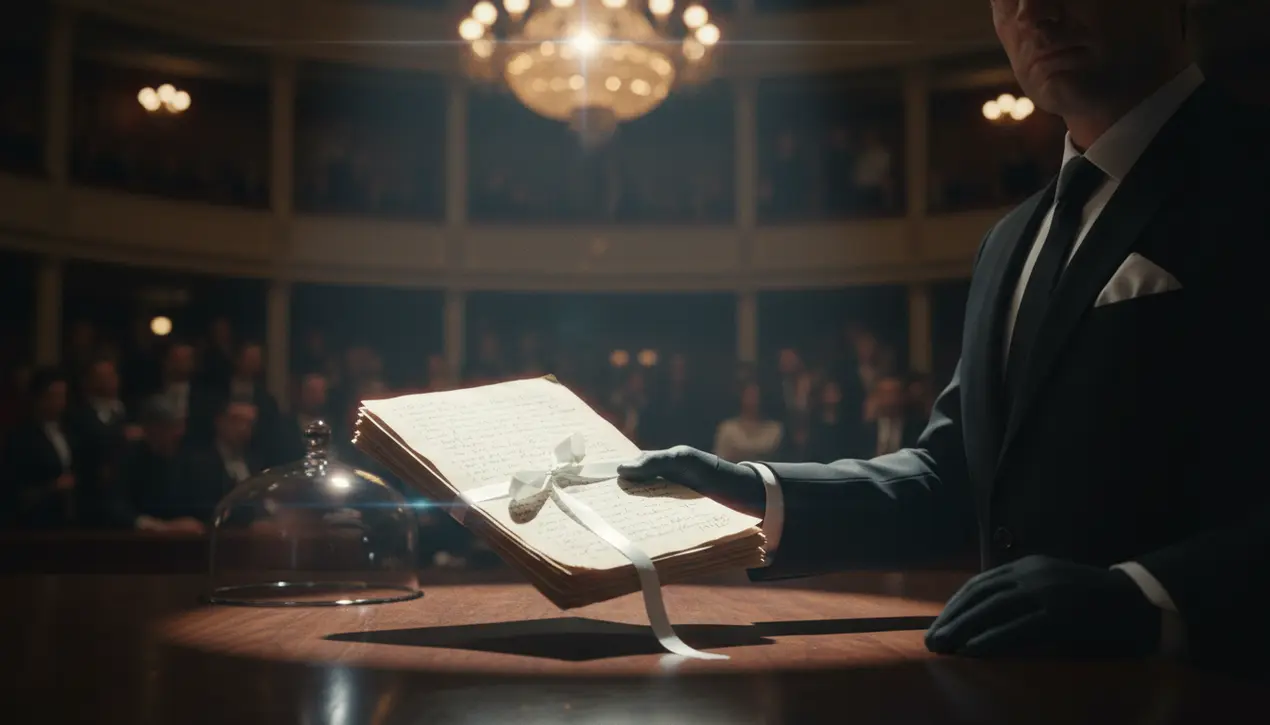
CryptonftsDigital Art and Artists
CIA's Kryptos Sculpture Code Sells for Nearly $1 Million
OL
Oliver Scott
5 hours ago7 min read
In a stunning testament to the enduring value of classified intelligence and cryptographic intrigue, the handwritten solution to the CIA's famed 'Kryptos' sculpture has been auctioned for nearly one million dollars, a financial valuation that held remarkably firm even after the secret solution was accidentally leaked to the public. This event is not merely an art world curiosity but a profound case study in the economics of secrecy, where the perceived value of information can withstand its own declassification.The sculpture, a Sphinx-like copper screen installed at the CIA headquarters in Langley, Virginia, in 1990, was created by artist Jim Sanborn with the explicit help of a former CIA cryptographer, Edward Scheidt. It features four encrypted sections, or ciphers, that have collectively tormented and fascinated amateur and professional codebreakers for over three decades, becoming a holy grail within the global intelligence community.The first three sections were solved relatively early, but the final 97-character passage, known simply as K4, remained one of the most famous unsolved puzzles in the world until Sanborn himself began confirming small portions of the solution in 2010 and 2014. The recent auction, however, involved the complete, handwritten decryption key, a physical artifact representing the culmination of this intellectual odyssey.The fact that it commanded such a premium, reportedly from a private collector, after the solution's accidental public disclosure speaks volumes about the shifting landscape of risk and asset valuation. In risk analysis, we often assess the impact of information disclosure on asset price; here, the asset's value demonstrated a surprising resilience, suggesting that the tangible, authenticated proof of the solution—the original document—holds an intrinsic worth that transcends the mere knowledge of the plaintext.This parallels scenarios in corporate espionage or diplomatic cable leaks, where the original, verifiable document often carries more weight and legal standing than the disseminated information itself. The buyer is not just purchasing a string of characters; they are acquiring a certified piece of intelligence history, a relic from a pre-digital age of espionage that symbolizes the eternal cat-and-mouse game between code makers and code breakers.The sale also raises compelling questions about the future of such artifacts. Will this set a precedent for the auction of other declassified or leaked intelligence materials? Could we see the notebooks of Cold War spies or the operational plans of historic missions become high-value collector's items? The CIA has maintained a characteristically tight-lipped stance on the sale, but one can surmise a degree of institutional discomfort with a core piece of its campus lore being commodified.For intelligence agencies worldwide, this event underscores a new, non-state actor in the information domain: the private collector, motivated not by geopolitical advantage but by historical prestige and the pure, acquisitive thrill of owning a secret. The nearly seven-figure price tag affirms that in our information-saturated era, the allure of a genuine, hard-won mystery—and its definitive solution—remains one of the most potent and valuable commodities of all.
#Kryptos
#CIA
#sculpture
#code
#auction
#featured
#cryptography
#art
#puzzle
Stay Informed. Act Smarter.
Get weekly highlights, major headlines, and expert insights — then put your knowledge to work in our live prediction markets.
Comments
Loading comments...
© 2025 Outpoll Service LTD. All rights reserved.